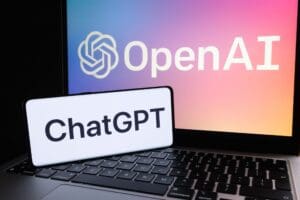[ad_1]

Manhattan Associates, a supplier of supply chain management software solutions and the market share leader for warehouse management systems (WMS), had their Momentum user conference a couple of weeks ago. Sanjeev Siotta, the chief technology officer at Manhattan, spoke about the role of ChatGPT for supply chain management in one of the keynotes on day one of the conference.
If you have not been paying attention to technology news lately, ChatGPT – a form of what is being called Generative AI, is the most significant technology launch since the Apple iPhone. This is the fastest-growing application in history. It achieved 100 million users in only two months. ChatGPT is an AI text generating bot that was built on a family of large language models (LLMs). These models can understand and generate answers to text prompts because they’ve been trained on huge amounts of data. To say the application generates answers, however, is a huge understatement. It can generate whole articles in just a few seconds.
I’ve played with the bot surrounding supply chain themes. My takeaway is that my job as a writer is not in imminent danger. When the theme was specific, the engine did not have the correct data to generate a useful article. When the theme was a little broader, the article that was generated was very well written but contained a lot of fluff and did not drill down into what I would consider the most salient points; further when I did an Internet search on some of the points in the article, they could not be verified. When the theme was broader and widely written about – like “sustainable supply chains,” the resulting article was excellent.
What artificial intelligence does well is make predictions. Most forms of AI are prediction machines. ChatGBT is a statistical sentence/paragraph completion machine that composes content based on probabilities. The goal of ChatGPT is not to tell the truth, it is to write an article that looks like it was generated by a professional writer. The peril of generative AI is that the articles generated can be a patchwork of lies.
Clearly, ChatGPT could be used to help write training manuals. But Mr. Siotta of Manhattan Associates believes the potential of this technology goes well beyond that. Manhattan’s R&D team has been playing with ChatGPT for some months. They were puttering around with this technology well before it made the news. Mr. Siotta can see a potential role for generative AI in making supply chain applications better. Warehouse management systems generate huge amounts of data, which is a necessity if AI is to perform well. He envisions a manager asking the WMS “who are my best three pickers today?” Or “who should I assign to the inbound dock?”
He also believes ChatGBT could be used to help configure a WMS. If the bot is trained so that it knows every configuration option, a supply chain manager working at a retail chain could ask the machine to “create a new view that contains inventory from all distribution centers and any store that has the capability to do parcel shipments to customers!” Similarly, the bot could be used to test the code that is generated.
Polly Mitchell-Gutherie wrote a good article on this. For Generative AI to reach its potential, the bot needs to be asked the right questions. There is an emerging field called prompt engineering that is focused on this task. Human judgement must be applied to the outputs.
A colleague and I had a conversation with Manhattan’s CEO, Eddie Capel. We of course asked him when we could expect to see this type of functionality included in upcoming product releases. He did not know. Before it can be used, the technology must be licensed from OpenAI – the parent company. They don’t yet know what that license would cost or what restrictions would surround the license.
[ad_2]
Source link













